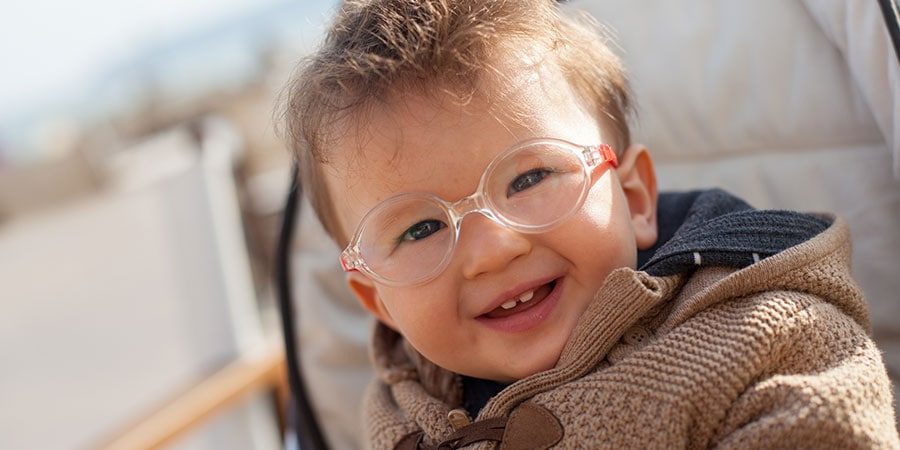Why Proper Eye Care Starts in Childhood

Proper eye care during childhood is a crucial aspect of overall health and development.
This article examines the significance of early eye examinations, the prevalence of common childhood vision problems, and strategies to prevent eye strain in children.
Additionally, it explores the impact of technology on children’s vision and the role of nutrition in maintaining healthy eyes during this crucial stage of life.
By adhering to objective and impersonal writing, this article aims to provide a comprehensive understanding of the importance of proper eye care in childhood.
Key Takeaways
- Early eye examinations are important to detect and address potential vision problems in children.
- Regular check-ups ensure optimal eye health and development.
- Excessive screen time can lead to digital eye strain and myopia progression.
- Adequate nutrition and outdoor activities play a crucial role in maintaining healthy eyes in childhood.
The Importance of Early Eye Examinations
Early eye examinations are crucial in order to detect and address any potential vision problems in children. The importance of early intervention cannot be overstated, as it allows for timely treatment and management of various eye conditions. Regular check-ups play a significant role in ensuring optimal eye health and development in children.
By identifying any visual impairments or abnormalities at an early stage, healthcare professionals can provide appropriate interventions and prevent further deterioration of vision. Early eye examinations also enable the identification of underlying systemic conditions that may affect eye health.
Additionally, regular check-ups contribute to the overall well-being of children by promoting early detection and management of eye diseases such as amblyopia, strabismus, and refractive errors. By prioritizing early eye examinations, children can experience improved visual function, enhanced academic performance, and a higher quality of life.
Common Childhood Vision Problems
One important aspect to consider regarding childhood vision is the prevalence of common vision problems. These problems can have a significant impact on a child’s overall visual health and can affect their academic performance and quality of life. It is crucial for parents and caregivers to be aware of these common vision problems and seek appropriate treatment options.
Here are three common childhood vision problems:
- Myopia (nearsightedness): It is characterized by difficulty seeing distant objects clearly. Treatment options include eyeglasses, contact lenses, or refractive surgery.
- Amblyopia (lazy eye): This condition occurs when one eye does not develop normal vision. Treatment options for amblyopia include patching the stronger eye or using eye drops to blur vision in the stronger eye, thereby forcing the weaker eye to work harder.
- Excessive screen time: Prolonged exposure to screens, such as smartphones, tablets, and computers, can lead to digital eye strain and myopia progression in children. It is important to limit screen time and encourage breaks to reduce the strain on children’s eyes.
Tips for Preventing Eye Strain in Kids
To prevent eye strain in children, it is recommended to establish healthy habits related to screen time and encourage regular breaks. This can be achieved by implementing screen time restrictions and promoting outdoor activities. Limiting the amount of time children spend on screens, such as televisions, computers, and smartphones, can help reduce the risk of eye strain. Encouraging outdoor activities, such as sports or simply playing outside, not only provides a break from screens but also promotes overall eye health. Outdoor activities expose children to natural light, which can help prevent myopia and contribute to the development of healthy eyes. Additionally, engaging in outdoor activities allows for the use of different visual skills and distances, which can help alleviate eye strain caused by prolonged screen time.
The following table provides a summary of tips for preventing eye strain in kids:
| Tips for Preventing Eye Strain in Kids |
|---|
| Establish screen time restrictions |
| Encourage regular breaks |
| Promote outdoor activities |
| Limit time spent on screens |
| Expose children to natural light |
How Technology Affects Children’s Vision
The impact of technology on children’s vision is a topic of concern among researchers and healthcare professionals. Excessive screen time has been linked to various consequences for children’s vision.
One of the most common issues is digital eye strain, also known as computer vision syndrome. This condition is characterized by symptoms such as eye fatigue, dryness, redness, and blurred vision. The use of digital devices exposes children’s eyes to blue light, which can disrupt sleep patterns and affect overall eye health.
Additionally, prolonged screen time can lead to myopia, or nearsightedness, in children. To mitigate the negative effects of technology on children’s vision, it is important to encourage breaks from screens, practice proper ergonomics, and ensure appropriate lighting conditions.
Nutritional Factors for Healthy Eyes in Childhood
Adequate nutrition plays a vital role in maintaining healthy eyes during childhood. Along with dietary supplements for visual health, outdoor activities also contribute significantly to maintaining good eyesight. Research suggests that certain nutrients are essential for ocular health, including vitamin A, omega-3 fatty acids, and antioxidants like vitamin C and E. These nutrients can be obtained through a balanced diet that includes fruits, vegetables, fish, and nuts. Additionally, outdoor activities such as sports and playtime in natural light have been linked to reduced risk of developing myopia in children. Encouraging children to engage in outdoor activities not only promotes physical fitness but also exposes them to natural sunlight, which is beneficial for eye health.
| Nutrient | Food Sources |
|---|---|
| Vitamin A | Carrots, sweet potatoes, spinach |
| Omega-3 fatty acids | Salmon, walnuts, flaxseeds |
| Vitamin C | Oranges, strawberries, bell peppers |
| Vitamin E | Almonds, sunflower seeds, spinach |
This table highlights some key nutrients for maintaining healthy eyes and their food sources. By providing proper nutrition and encouraging outdoor activities, we can help children maintain good eye health during their formative years.
Frequently Asked Questions
What Are the Signs That a Child May Have a Vision Problem?
Early detection of vision problems in children is crucial for their overall eye health. Warning signs that a child may have a vision problem include squinting, tilting the head, rubbing the eyes excessively, and difficulty focusing on objects.
What Should I Do if My Child Fails a Vision Screening at School?
Early intervention for vision problems in children is crucial. If a child fails a vision screening at school, it is recommended to consult an eye care specialist. Finding the right specialist ensures proper diagnosis and treatment.
Can Eye Exercises Help Improve a Child’s Vision?
Eye exercises have been suggested as a potential method for improving children’s vision. However, there is limited scientific evidence supporting their effectiveness. Other alternative treatments for children’s vision improvement should also be explored.
At What Age Should a Child Start Wearing Glasses?
The appropriate age for a child to start wearing glasses depends on the individual’s vision needs. It is recommended to consult an eye care professional who can assess the child’s visual acuity and prescribe the appropriate glasses.
Are There Any Foods or Vitamins That Can Specifically Improve a Child’s Eye Health?
Foods and vitamins have been studied for their potential to improve a child’s eye health. While certain nutrients like vitamin A and omega-3 fatty acids may have a positive impact, further research is needed to determine their specific role in eye care during childhood.









